But even with our limited time and money, we did have some wonderful experiences. We stayed for a couple of days in a resort on the edge of the orangutan rehabilitation centre and were twice able to see the orangutans at feeding time in the afternoon.
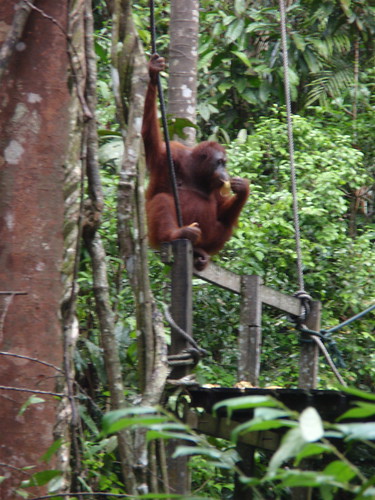
The rehabilitation centre takes young orphaned orangutans or those that have been captured by planters because the orangutans eat the palm-oil trees. And it takes orangutans that have been kept as pets and become dependent on humans. The orangutans are gradually taught to lead independent lives. At a transition stage they are released to the forest but are fed every day (which is when you can view them) but eventually they are re-released in wilder areas. A few of them never manage the full transition and remain in the feeding area. Orangutans breed very slowly - each female may have only two to three babies across her life span - so the role of the rehabilitation centres is important as the orangutan's habitat is decreased through plantation clearing.
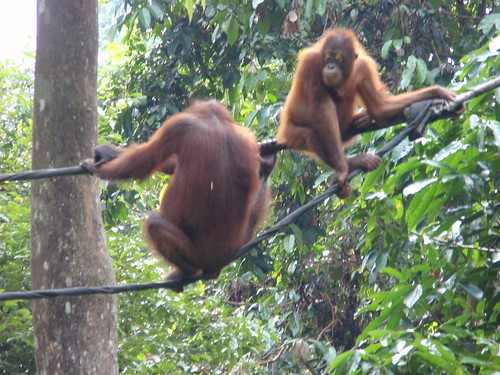
[I felt some envy of the photographers with their huge-lensed cameras who must have had wonderful photos of the orangutans. But the bother of carrying them around literally outweighs for me the regret that I can't get better photos from time to time.]
The forest is filled with families of noisy, greedy, fast-breeding macaque monkeys who descended on the left-over food once the orangutans and the rangers had departed:
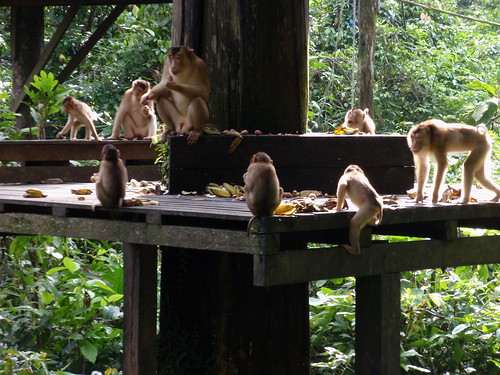
We also saw more of the proboscis monkeys we'd seen in the wild in Bako National Park.
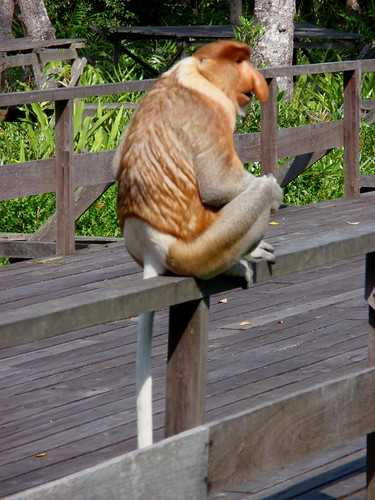
Much of Sabah - indeed, huge swathes of Malaysia - has been cleared and planted with palm-oil trees to supply the world's increasing needs for oils in food and many other products. The area around Labuk Bay is one such plantation, where the narrow fringe of mangroves that was the proboscis monkeys' habitat was increasingly threatened. The plantation owner fortunately recognised this was happening and left a buffer of forest for the monkeys, as well as introducing a supplemental feeding program for them. I'm not sure if the feeding is a good thing for the monkeys in the long run, but it did provide us with a great opportunity to see the bizarre long-nosed (male) monkeys up close,and whole families of proboscis monkeys noisily enjoying themselves.
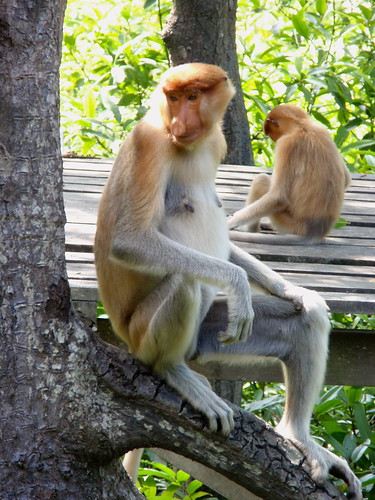
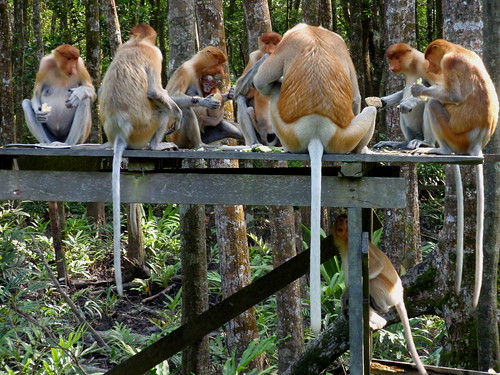
So, we've had a glimpse of the world of nature tourism and, as usual, my response is a bit ambivalent. With the rate of clearing for plantation farming the habitats of many of the Borneo species are being invaded. Were it not for the rehabilitation centres and sanctuaries such species as the orangutans and proboscis monkeys would be more endangered than they are. They're not in enclosures and the aim of the orangutan rehabilitation centres is to enable them to be self-sufficient. Both the orangutans and monkeys are breeding well which I imagines indicates that the situation suits them. But they are, to varying extents, dependent on feeding by humans and they come to trust people and are comfortable around them, which must be dangerous in some contexts. But even with these doubts, I'm very happy to have had these experiences.
We stayed a couple of nights in the very beautiful (though not very luxurious) Sepilok Nature Resort so that we had easy access to the orangutan sanctuary.
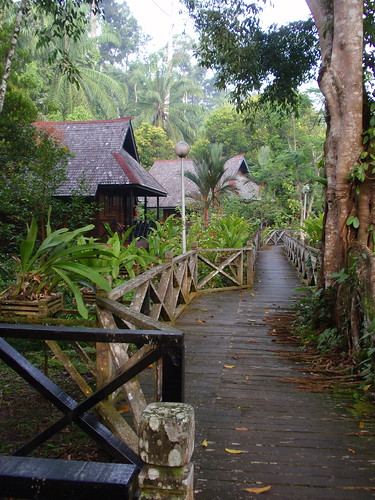
The resort is a series of huts made from local wood, clustered around a small lake. One morning as I went on a walk around the grounds there was a very active, cheeky family of macaques at the end of the walkway in the photo above. The gardens of the resort are especially wonderful as they've been planted with lots of flowering plants and luxurious trees. All the plants you see often languishing indoors in Australia, are here in their natural habitat and are bigger, brighter and infinitely more healthy. There are orchids scattered throughout the garden and even though it's not really the orchid season there were enough blooms to keep me happily admiring.
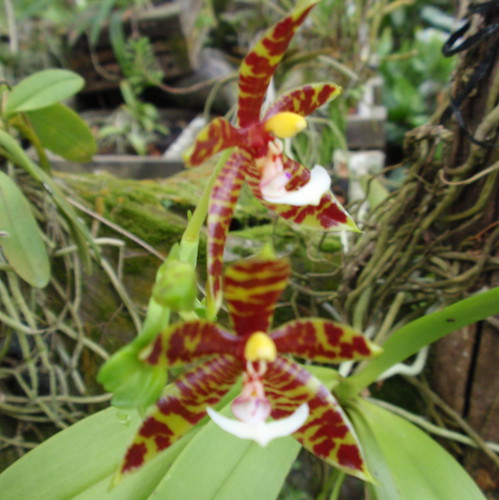
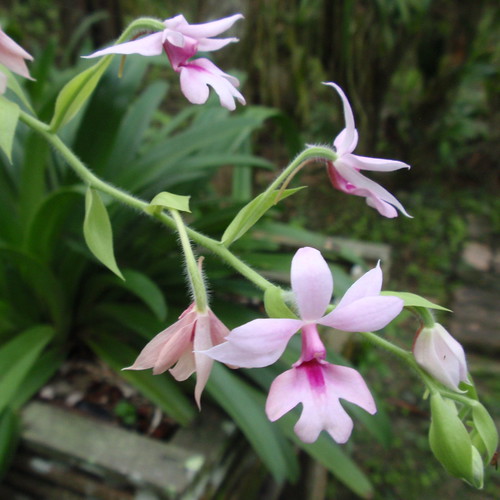

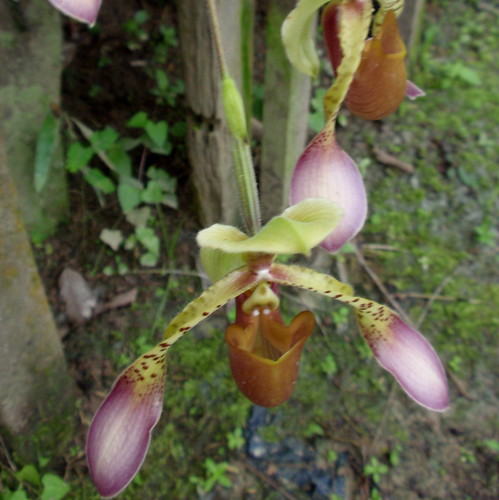
4 comments:
What a lovely variety of experiences we are sharing with you, and your commentary provides more than just photos ever could. Thank you.
Even though you may not have the super cooper long lens camera, I think your photos are great.
It's hard to know whether the conservation schemes which rely on human intervention are a good thing or not, I suppose once humans have interfered with the natural habitat it's too late to go back. I think in the end if it ensures the survival of the animals then it is a good thing.
oh i love your photos too. what a wonderful piece of the earth. im with you on the ambivalence, but i am glad to hear some people are trying to be responsible. that resort looks amazing!
Great photos and what a wonderful day :)
Post a Comment